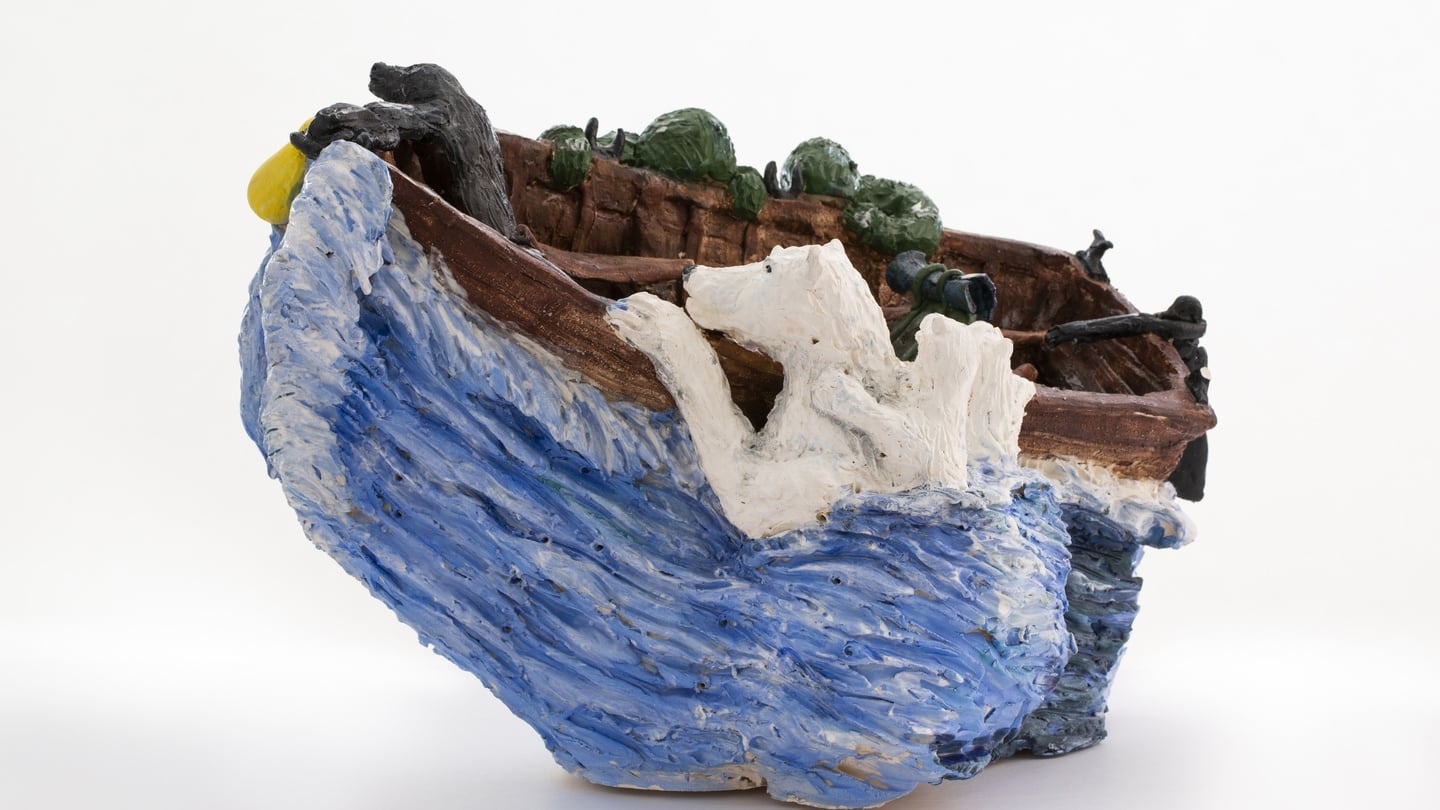What is it like to visit a prison? Visitors to the Midlands Prison in Portlaoise check in to a bright building, where a children's play area occupies a wide window space. You present your ID and leave your mobile phone behind. While I wait, I see all generations. Some are cheery and upbeat, some anxious-looking, others wear resigned expressions, both weary and sad. A sign says that visits are all booked up for some dates to come. There is an airport security-style screening system. Then there comes a series of heavy metal doors, corridors and high windows that you can't quite see out of.
Despite having the familiar tinge of so many institutions (a certain choice of industrial and robust paint colours, no nonsense signage, and the presence of uniformed people ready to tell you what to do), it feels odd and wrong. That’s going as a visitor: for those incarcerated in Ireland’s prison system, it is obviously very different, and it is a journey that starts long before they actually hear the final door close out the world.
<a href='javascript:window.parent.actionEventData({$contentId:"7.1213540", $action:"view", $target:"work"})' polopoly:contentid="7.1213540" polopoly:searchtag="tag_location">Shelton Abbey</a> seems to have been taken over by Banksy
0 of 6
What surprised artist Brian Maguire most, on his first visit to Portlaoise, back in 1985, was the grimness of it all. "Thirty years ago, I met the 18th century. It shocked me completely," he recalls. "That there were human beings in stone cells they were going to stay in for 20 or 30 years." A painting by Maguire from this period shows the central atrium and balconies of Portlaoise, all depths of grey, its lines like abstract art.
This year, he has revisited Portlaoise, on a trip that took in all 12 of Ireland’s prisons, including the two open centres, and which hold a population of 3,837. The visits have been to select work by people in custody for Open Minds, a pair of exhibitions at Tallaght’s Rua Red and Limerick’s Hunt Museum.
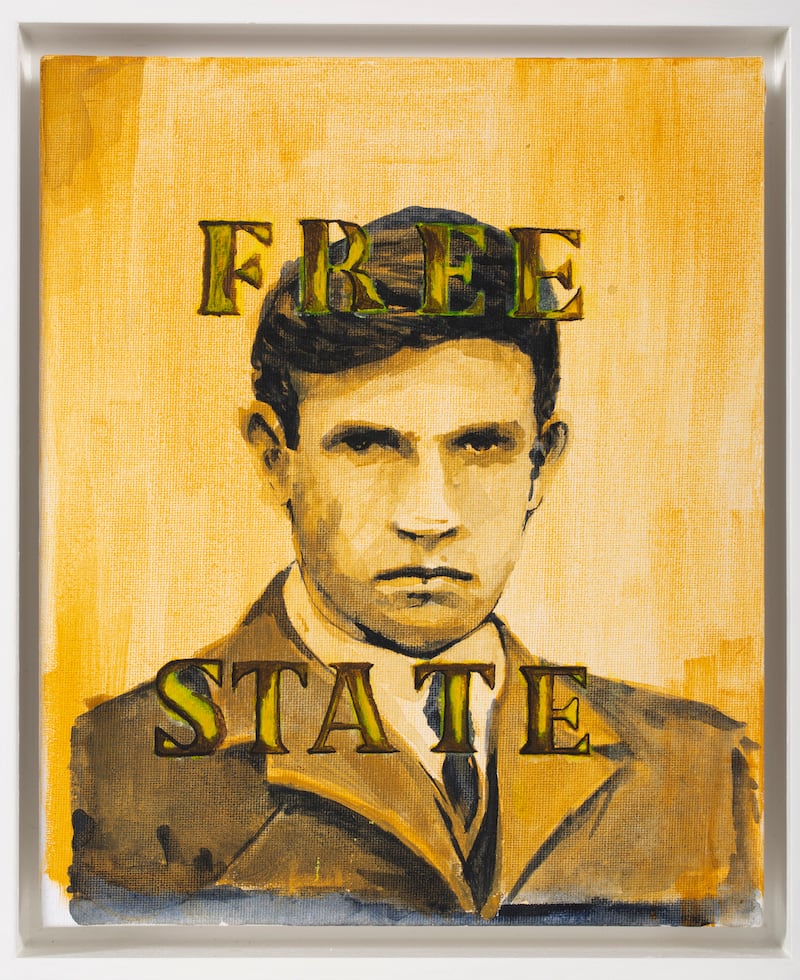
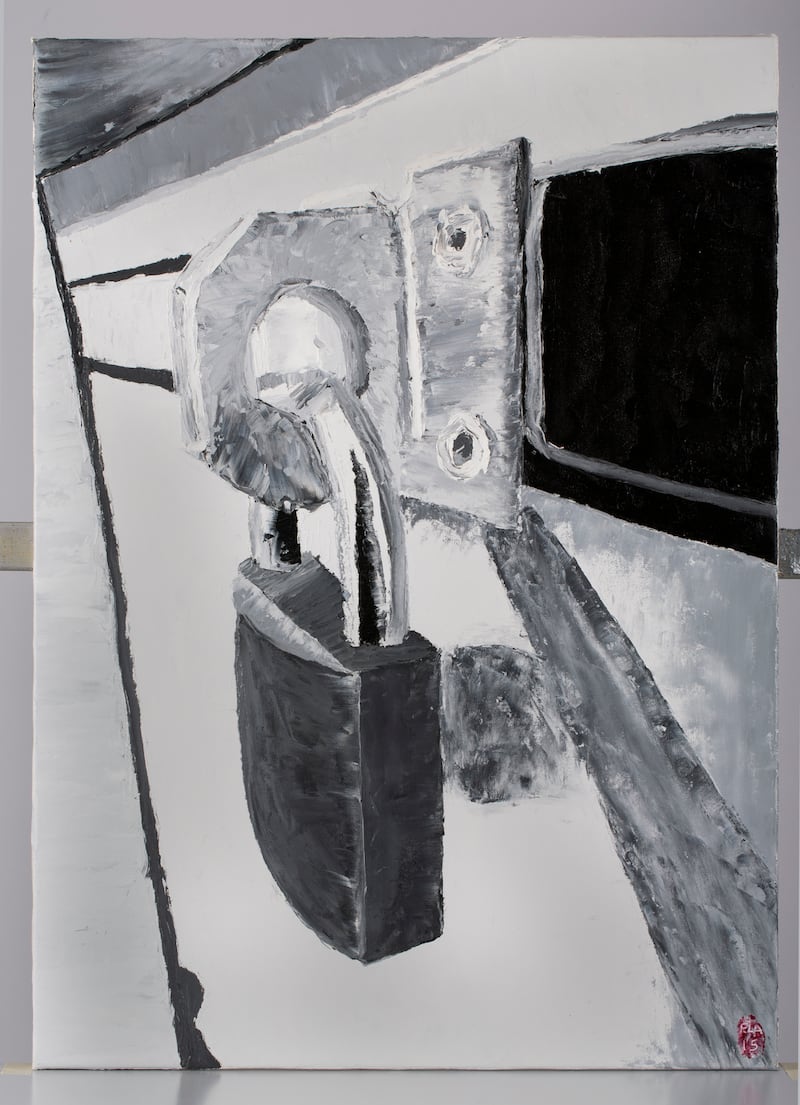
Maguire, whose paintings from his time spent in refugee camps in Syria will be on show at the UN headquarters in New York next February, has, for years, taught art in Irish prisons. He says that there are connections between an artist's ways of making, and those of prisoners: "the conditions of the studio, isolation, are the conditions of the cell," he says. "Communication through art, a solitary action, is also possible in jail." The art programme is jointly funded by the Arts Council and the Irish Prison Service.
The conditions of making may have some similarities, but the differences are glaring, the foremost being physical liberty. I’m at the Midlands to meet some of the artists. The meeting takes place in the library, which is in the school block of the prison. Term runs the same as in any other school or college, so the teachers have been busy with the start of a new year, interviewing the new intake, and finding the right courses and classes for them. Martin (names have been changed at the request of the prison authorities, who also asked that no identifying features or details are revealed) comes in first.
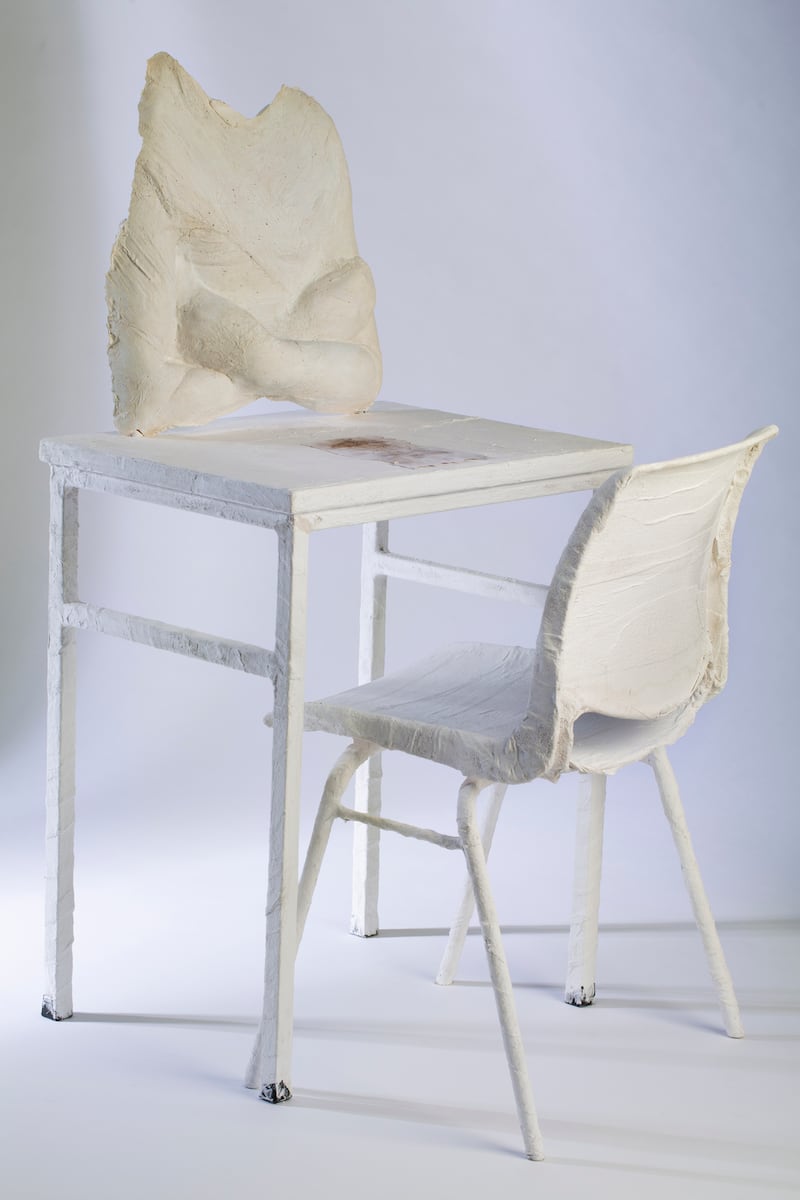
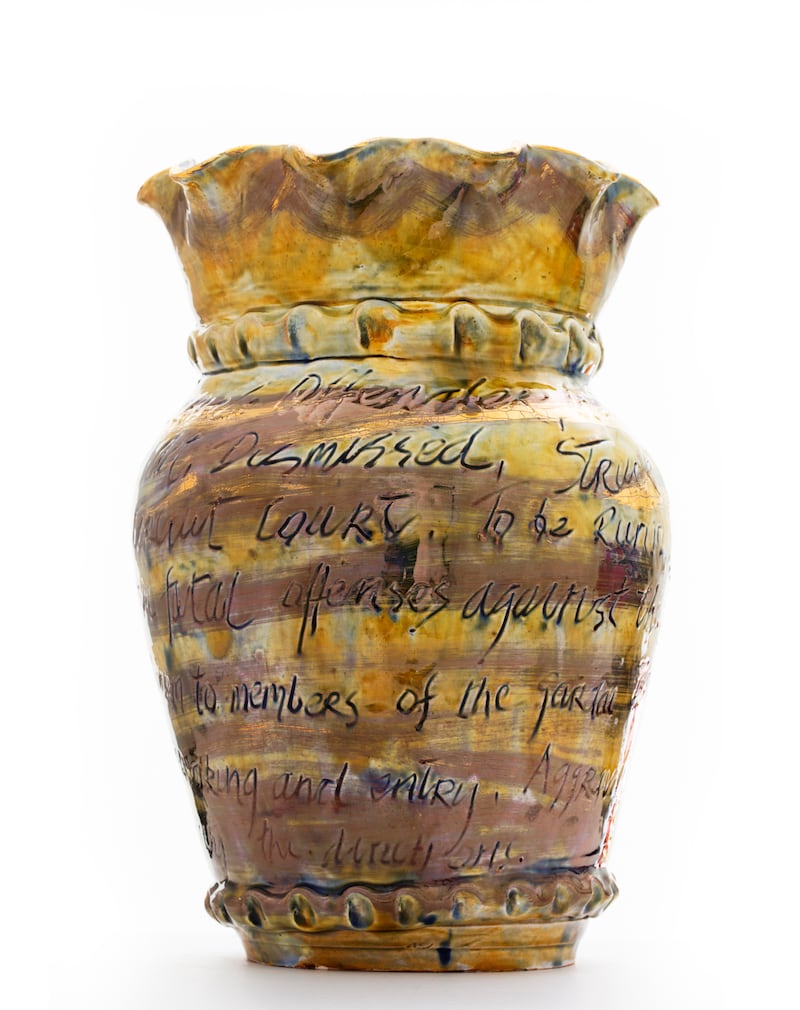
He’s muscular, with a big smile, and clear direct eye contact. His energy infuses the room. “Most of my drawings come from magazines, or photographs from my family,” he says. “Because I’m in here,” he adds almost unnecessarily. “Everyone has a story. I focus mainly on people and faces. I’m fascinated by expression. We all have a concept of our own face, when you look in a mirror, but the outside world doesn’t see us that way.”
Martin has nothing but praise and respect for the art teachers. “They allow you to grow, be yourself without offending people.” When I say I’m not sure you can both be yourself and not offend people, he looks at me with that expression people adopt when having to explain the blindingly obvious to someone very dim. “Ahh, it’s different in here,” he says.
The term "Outsider Art" is used to describe artists outside the mainstream or institutional art world, although it has always struck me as a way for the mainstream to draw its makers in, and shape how we see it. Perhaps this should be called "Insider Art"? Or maybe just art. At Rua Red, the exhibition is still being hung when I visit. Rows of ceramic tiles are waiting to go up. Some wouldn't be out of place in a museum in Italy: they have that timeless depth to them. Birds are a popular theme, as are flowers and trees. Often, says Maguire, you can see the influence of a particular art teacher, or artist in residence, on the work from a particular prison. "Shelton Abbey seems to have been taken over by Banksy," he observes.
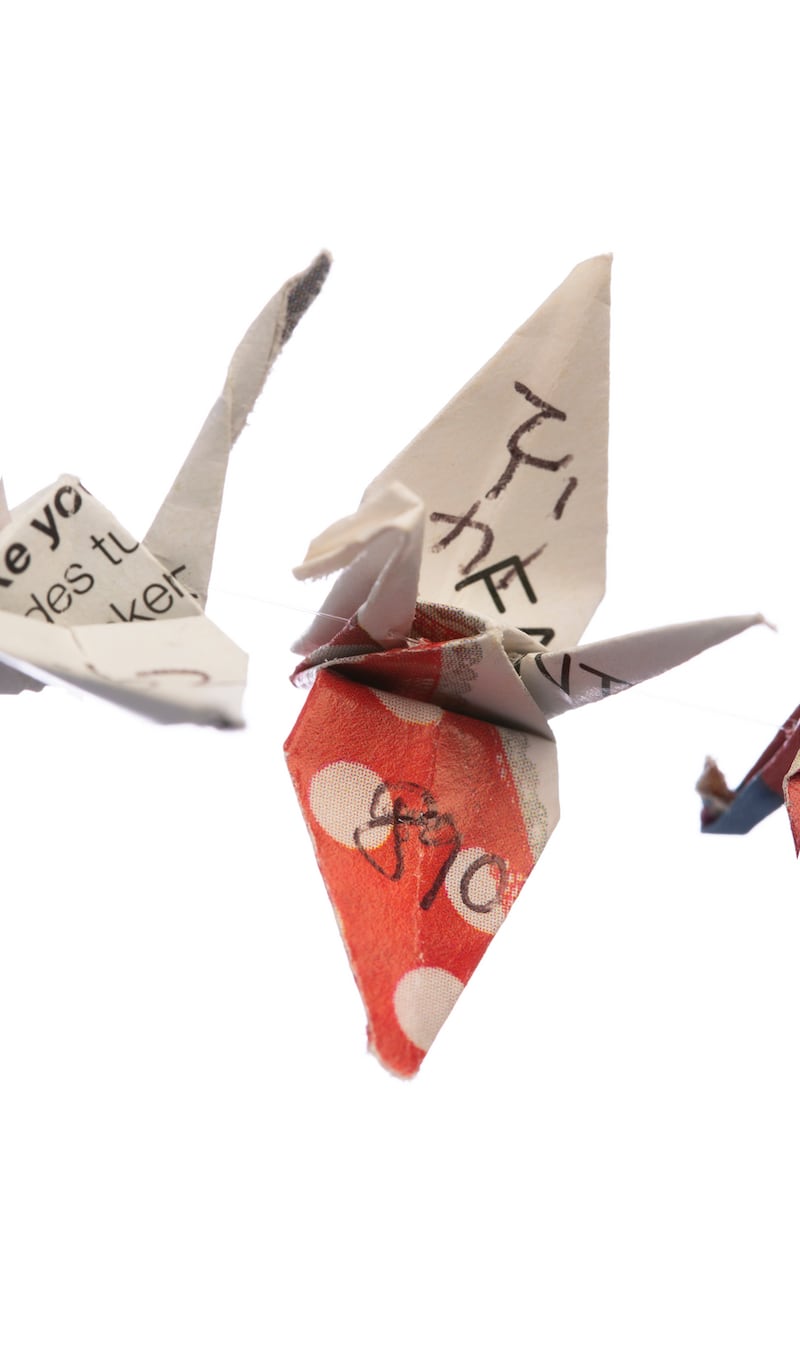
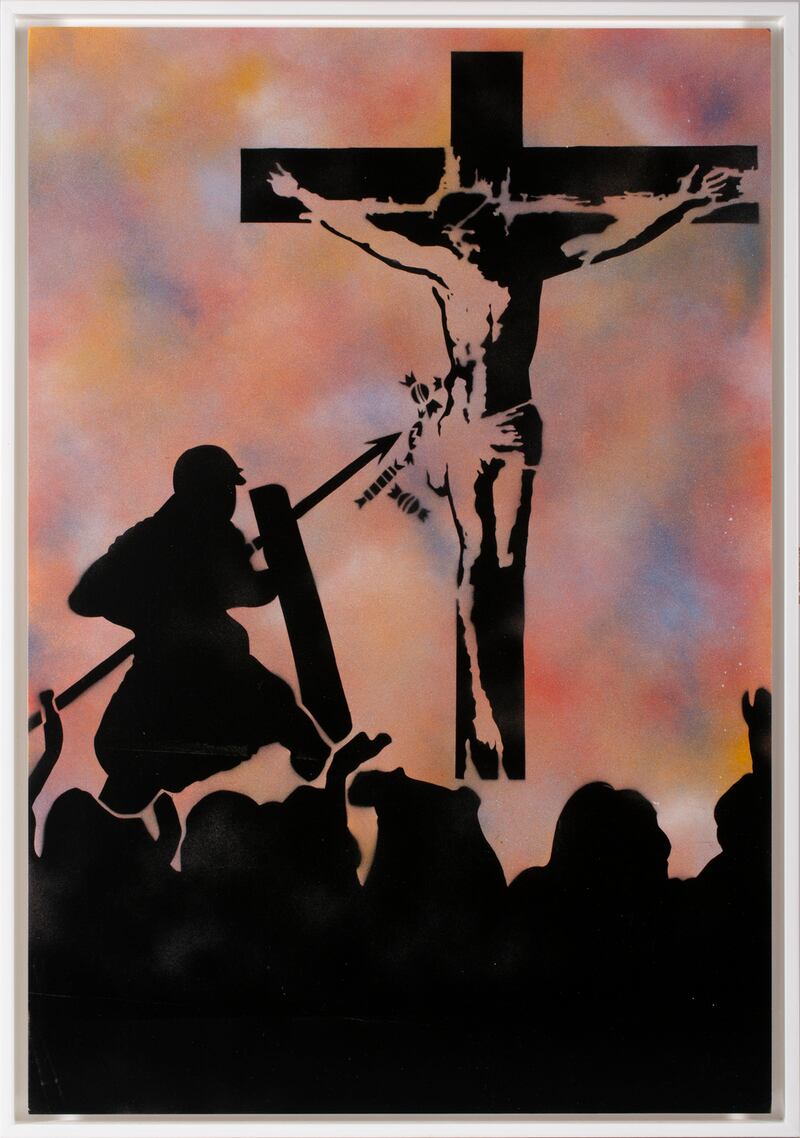
On the walls are wild horses, a pair of drawings showing the view through a barred window, and a lake with a tree outside. Freedom is a popular theme. An extraordinary mobile is made up of 1,000 origami birds, each with a day's date, representing three years of a prison sentence. A ceramic urn is etched with the words of a charge sheet,a move that Turner Prize-winning ceramist Grayson Perry would approve of. A cluster of sculptures are adorned with huge whorls of fingerprints.
Another work is more metaphorical still: a white chair sits at a table, on which is a headless torso, arms folded. It’s like a semi-disembodied, half memory of a prison visit. A scrap of writing on the table says “for you to be here now, trillions of atoms had somehow to assemble. Experience the supremely agreeable but generally under-appreciated state known as existence.”
This is not the first exhibition of art by prisoners. Previous shows have been held at institutions including Dublin's Hugh Lane gallery, Kilmainham Gaol, and the Hunt Museum. Tom Shortt, arts officer and co-ordinator with the Irish Prison Education Service, who is trying to work out the best way to organise and hang the ceramic tiles, says art is often called a gateway to education within the prison system.
That education is important. Even if you are of the opinion that prison should be pure punishment and as unpleasant as possible, pragmatism alone would suggest you align yourself with the educationalists. It has been shown to improve rehabilitation rates, and reduce recidivism. Consider also Maguire's observation that "the prisons in Ireland draw their clients from the same addresses", and realise that unless you are going to write off whole swathes of society, education in prison, and in the follow-on centres, is vital. And prison is tough. In February of this year, two deaths by suicide were reported at the Midlands Prison within 10 days of one another.
Back in the prison library, more men come in, one by one, to show their portfolios. Water is a popular theme. “I always said I couldn’t live anywhere more than 20 miles from the sea,” one man says, seemingly without irony. He tells me he had won a place at the Crawford College of Art in Cork, “but circumstances happened and I never actually made it”.
In prison, most of the everyday decisions are taken away from you. Art allows you to make thousands of small, and larger decisions, in the course of a work; the consequences of which are played out in the painting, drawing or sculpture itself. Phil shows me astonishing abstract paintings, bright colours with a shadowy heart, painted on newspaper. He asks me to choose one to take home. His work is accomplished and unique. “That’s me, sitting at my desk, seeing outside,” he says of a page of dark shapes with splashes of yellow. He says that the art teachers in prison helped him to free up his drawing and painting style. “I’m stuck in here, I have no excuses.
“If I have a passion for something it takes three stages,” he continues more forcefully: “I observe, I gain control, and I win.” Phil’s statement stands out starkly against an otherwise odd vulnerability that I experience from the men that I meet. It’s a vulnerability over and above what is usually experienced when an artist is showing their work to a stranger for the first time. One heartbreakingly young man seems both surprised and frightened to find himself here.
French philosopher Michel Foucault developed the concept of "heterotopia", as somewhere opposite to the imagined perfection of Utopia. Heterotopias are those places just outside society, where we put those people or activities that disrupt the smooth order of things. Heterotopias are places for things we would prefer not to dwell on. Prisons are heterotopias. So too, in Foucault's philosophy, are cruise ships and graveyards.
Artists also have an outsider status, and it has often been argued that the artist has freedoms not afforded to other citizens. Freedom from censorship, or from those small, everyday moralities, for example. It is not always the answer. When Michael Stone tried to enter the Stormont parliament buildings, armed with explosives, knives and an axe, in 2006, his defence was that it was an act of performance art. A loyalist prisoner, released under licence as part of the Belfast Agreement, he is now back in prison. He had turned to art during his 30-year sentence. "He was a funny mixture of a man," recalls Maguire of his encounters with Stone.
Back at Rua Red, director Maolíosa Boyle believes in the role of the gallery as a place to explore those freedoms, like another heterotopia, perhaps. “I have always believed that galleries should make a difference to their community through engagement, as neutral spaces where vital and sometimes challenging conversations take place.”
“It is a form of escapism,” says Richard, whose work shows landscapes you could lose yourself in. Picasso, who spent time visiting one of Spain’s largest prisons in Valencia, remarked that “even in a prison […] I would be almighty in my own world of art”. In the Midlands, and at Rua Red, the art is an escape, and a form of self-discovery and expression for the artists. But it also makes it impossible not to see its individual makers, anonymous though they may be here, as individual people, with hopes, dreams, desires and aspirations too. And maybe it does make a doorway for them to find a way back into the world on release.
Open Minds is at Rua Red, Tallaght, until October 5th, with a further selection of works at The Hunt Museum, Limerick from October 18th-November 24th. ruared.ie, huntmuseum.com





